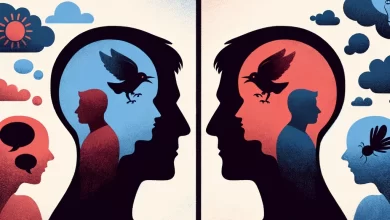Understanding Post Traumatic Disorder Recovery
Have you ever wondered how individuals recover from traumatic events and overcome the debilitating effects of post-traumatic stress disorder (PTSD)?
PTSD is a mental health condition that can develop in people who have experienced distressing, dangerous, or shocking events. It can have a profound impact on their mental well-being, causing symptoms such as anxiety, avoidance, and intrusive thoughts. But what are the key factors in the recovery process? And what are the most effective treatment options available?
In this article, we will delve into the world of PTSD recovery and explore the various coping strategies and treatment options that can help individuals regain control over their lives. From therapy and counseling to self-care techniques and support systems, we will uncover the tools and resources necessary for a successful recovery.
Key Takeaways:
- Post-traumatic disorder (PTSD) is a mental health condition that can develop after experiencing a traumatic event.
- Symptoms of PTSD include anxiety, avoidance, intrusive thoughts, and disrupted sleep patterns.
- Effective treatment options for PTSD include psychotherapy, medication, and a combination of both.
- Coping strategies such as self-care, relaxation techniques, and support groups play a significant role in the recovery process.
- Support from family, friends, and mental health professionals is crucial for individuals with PTSD to overcome the impact of their trauma and move towards a healthier, more fulfilling life.
What is Post-Traumatic Stress Disorder?
Post-traumatic stress disorder (PTSD) is a mental health disorder that can develop in individuals who have experienced a shocking, scary, or dangerous event. It is a natural response to feel afraid during and after a traumatic situation. The body’s “fight-or-flight” response is triggered, helping individuals avoid or respond to potential danger. While most people recover from initial symptoms over time, those who continue to experience problems may be diagnosed with PTSD.
Symptoms of PTSD can vary but usually begin within 3 months of the traumatic event. In order to be diagnosed with PTSD, individuals must have symptoms for longer than 1 month that significantly interfere with their daily lives. PTSD can affect people of all ages, and children and teenagers may exhibit different symptoms compared to adults.
Signs and Symptoms of PTSD
Post-traumatic stress disorder (PTSD) can present with a range of signs and symptoms, typically emerging within three months of a traumatic event. These symptoms can be categorized into several clusters: re-experiencing symptoms, avoidance symptoms, arousal and reactivity symptoms, and cognition and mood symptoms.
Re-experiencing Symptoms
Individuals with PTSD may experience flashbacks, which involve reliving the traumatic event through vivid memories or dreams. They may also have distressing thoughts and physical signs of stress when reminded of the event, such as a rapid heartbeat or sweating.
Avoidance Symptoms
Avoidance symptoms manifest as efforts to avoid people, places, activities, or objects that remind the person of the traumatic experience. They may also avoid thoughts, feelings, or conversations related to the event. Avoidance symptoms can interfere with the individual’s ability to fully engage in their daily life and maintain healthy relationships.
Arousal and Reactivity Symptoms
People with PTSD may exhibit heightened arousal and reactivity symptoms. This can include being easily startled, feeling constantly tense or on edge, difficulty concentrating or sleeping, irritability, and engaging in risky behavior. These symptoms can significantly impact an individual’s overall well-being and quality of life.
Cognition and Mood Symptoms
Cognition and mood symptoms associated with PTSD can involve various cognitive and emotional disturbances. Individuals may have trouble remembering key features of the traumatic event, experience negative thoughts or emotions, exhibit feelings of blame or guilt, lose interest in previously enjoyable activities, isolate themselves socially, and struggle to experience positive emotions.
While individuals may experience some or all of these symptoms, a formal diagnosis of PTSD requires specific combinations of symptoms to be present for at least one month. It is important for anyone experiencing these signs and symptoms after a traumatic event to seek professional help for an accurate diagnosis and appropriate treatment.
PTSD in Children and Teens
Children and teenagers can exhibit distinct reactions to traumatic events, with symptoms that may differ from those seen in adults. It is essential for parents and caregivers to be aware of these unique expressions of post-traumatic stress disorder (PTSD) in young individuals, providing them with appropriate support and care.
Young children who have experienced trauma may display symptoms such as bedwetting, difficulties with speech, reenacting the traumatic event during play, and heightened clinginess. These behaviors serve as their way of coping and expressing distress.
Older children and teenagers, on the other hand, may exhibit symptoms more similar to those seen in adults. They might develop disruptive or destructive behaviors as a response to the traumatic event. Guilt and thoughts of revenge can also be prevalent among this age group, reflecting their struggle to process the traumatic experience.
Understanding the unique manifestations of PTSD in children and teenagers is crucial for providing appropriate support and intervention.
“The impact of trauma on children and teenagers can be profound and long-lasting. Recognizing their individual responses and being proactive in offering support can significantly contribute to their healing and recovery.”
By recognizing and addressing these symptoms early on, parents and caregivers can play a vital role in the recovery process. Providing a safe, understanding, and nurturing environment can help children and teenagers feel secure and supported.
Supporting Children and Teens with PTSD
Here are some strategies that can aid in supporting children and teenagers with PTSD:
- Open communication: Encourage open and honest conversations about their feelings and experiences.
- Validate their emotions: Let them know that their feelings are valid and acknowledge their pain.
- Seek professional help: Consult with mental health professionals who specialize in working with children and teens.
- Establish routines: Create a stable and structured environment that promotes a sense of safety and predictability.
- Promote self-care: Encourage healthy coping mechanisms, such as engaging in physical activities, practicing relaxation techniques, and pursuing hobbies.
- Connect with support resources: Explore support groups or connect with other families who have experienced similar situations.
By implementing these strategies, parents and caregivers can provide the necessary support and guidance to help children and teenagers navigate the challenges of PTSD and promote their overall well-being and recovery.
| Key Points |
|---|
| Children and teens may exhibit different symptoms of PTSD compared to adults. |
| Young children may display behavioral changes like bedwetting, speech difficulties, and reenacting the traumatic event. |
| Older children and teenagers may manifest symptoms similar to those seen in adults, such as disruptive behaviors and feelings of guilt or revenge. |
| Parents and caregivers should provide understanding, support, and appropriate care to help children and teens navigate the challenges of PTSD. |
Risk Factors for PTSD
Post-traumatic stress disorder (PTSD) can develop after a traumatic event, but not everyone who experiences trauma will develop the disorder. Several risk factors can increase the likelihood of developing PTSD.
- Traumatic event: The severity and duration of the traumatic event can contribute to the development of PTSD. The more intense and prolonged the trauma, the higher the risk.
- Previous exposure to trauma: Individuals who have experienced trauma in the past may be more susceptible to developing PTSD after a new traumatic event.
- History of mental health conditions: Those with a history of mental health conditions, such as anxiety or depression, may be more vulnerable to developing PTSD.
- Low levels of social support: Lack of support from family and friends can increase the risk of PTSD. Social support is crucial in coping with and recovering from traumatic events.
- Genetic or hormonal factors: Some individuals may have a genetic predisposition to developing PTSD. Hormonal factors, such as imbalances in stress hormones, can also contribute to the risk.
Personal factors, including age, gender, and personality traits, can also influence vulnerability to PTSD. Younger individuals may have a higher risk, as well as those who identify as female. Certain personality traits, such as high anxiety or a tendency to dwell on negative thoughts, can increase the likelihood of developing the disorder.
However, it is important to note that individuals with strong social support, resilient coping skills, and access to mental health resources may have a lower risk of developing PTSD. Building coping skills, such as problem-solving abilities and positive thinking, can help individuals navigate and recover from traumatic experiences.
Treatment Options for PTSD
Individuals with PTSD should seek professional help to determine the most suitable treatment plan for their symptoms and needs. There are several treatment options available, including psychotherapy, medication, or a combination of both.
Psychotherapy
Psychotherapy, also known as talk therapy, is an effective treatment for PTSD. It helps individuals identify and change troubling emotions, thoughts, and behaviors associated with their traumatic experiences. One common type of psychotherapy for PTSD is cognitive-behavioral therapy (CBT), which includes exposure therapy and cognitive restructuring.
- Exposure therapy: This therapy helps individuals gradually confront and manage the fear associated with the traumatic event. It involves exposing oneself to the memories, situations, or objects that trigger PTSD symptoms, in a safe and controlled environment. Through repeated exposure, individuals learn to develop coping strategies and reduce their anxiety.
- Cognitive restructuring: This therapy aims to challenge and change negative thoughts and beliefs that contribute to PTSD symptoms. By identifying and replacing distorted thoughts with healthier and more adaptive ones, individuals can gain a new perspective on their traumatic experiences, reducing the impact of PTSD symptoms.
Medication
Medication may be prescribed alongside psychotherapy to manage specific symptoms associated with PTSD, such as depression, anxiety, and sleep problems. Selective serotonin reuptake inhibitors (SSRIs), a type of antidepressant, are commonly used to treat PTSD. These medications help regulate serotonin levels in the brain, improving mood and reducing anxiety.
Support from Family and Friends
Support from loved ones plays a vital role in the recovery process. Understanding, empathy, and a safe environment for open communication can provide emotional support and contribute to treatment effectiveness. Encouraging the individual to attend therapy sessions, helping with medication management, and engaging in activities that promote relaxation and well-being can make a significant difference in their recovery.
Recovery from PTSD is possible with the right treatment options and support system. Each individual’s journey is unique, and it is important to consult a mental health professional to determine the most appropriate approach.
| Treatment Options | Benefits |
|---|---|
| Psychotherapy (talk therapy) |
|
| Medication |
|
| Support from Family and Friends |
|
Seeking Help for PTSD
If you or someone you know is experiencing symptoms of PTSD, it is crucial to seek assistance from a mental health professional. They have the expertise to diagnose and treat PTSD effectively. A mental health professional may include a psychiatrist, psychologist, or clinical social worker, depending on individual needs.
The first step towards seeking help is to schedule an appointment with a mental health professional. During the initial consultation, they will assess your symptoms, medical history, and any traumatic events experienced. Collaboratively, you will develop a tailored treatment plan to address your specific needs and goals.
Recovering from PTSD requires a comprehensive treatment plan that may involve psychotherapy, medication, or a combination of both. Psychotherapy, such as cognitive behavioral therapy (CBT), can help you identify and modify negative thoughts and behaviors associated with the traumatic event. Medication, if necessary, can assist in managing symptoms such as depression, anxiety, and sleep difficulties.
Support from family and friends also plays a vital role in the recovery process. Loved ones can provide emotional support, understanding, and encouragement throughout your journey. They can participate in therapy sessions or join support groups to gain a better understanding of PTSD and learn how to offer appropriate support.
Remember, seeking help and support is the first step towards reclaiming your life from the impact of PTSD. With professional guidance and the right resources, recovery is possible, and you can regain control over your mental well-being.
Coping Strategies for PTSD
Coping with Post-Traumatic Stress Disorder (PTSD) requires the development of healthy strategies to manage symptoms and improve overall well-being. Here are some effective coping strategies:
Self-Care Practices
- Maintain a healthy diet: Nourishing your body with nutritious food can support your overall well-being and mental health.
- Get enough sleep: Prioritize good sleep hygiene to promote rest and rejuvenation.
- Engage in regular exercise: Physical activity releases endorphins, reducing stress and promoting mood enhancement.
Relaxation Techniques
Implementing relaxation techniques can help reduce stress and anxiety associated with PTSD. Consider the following techniques:
- Deep breathing: Practice deep, slow breaths to help calm your mind and body.
- Meditation: Engage in mindfulness practices to enhance self-awareness and promote a sense of calm.
- Participating in Activities: Explore activities that bring joy and relaxation, such as hobbies, creative outlets, or spending time in nature.
Support Groups and Peer Support
Seeking support from others who have experienced similar challenges can provide a sense of community and understanding. Consider joining support groups or seeking peer support to connect with others on a similar journey.
Remember, finding coping strategies that work best for you is essential. It is important to seek professional guidance when needed so that you receive individualized support and advice. Remember to check out this resource for more information on coping strategies for PTSD.
| Coping Strategies | Benefits |
|---|---|
| Self-Care Practices | Improves overall well-being and mental health |
| Relaxation Techniques | Reduces stress and anxiety |
| Support Groups and Peer Support | Provides a sense of community and understanding |
Supporting a Loved One with PTSD
Supporting a loved one with post-traumatic stress disorder (PTSD) requires understanding, empathy, and a commitment to their well-being. By educating yourself about PTSD and its effects, you can better support your loved one on their journey to recovery.
Listen and provide a safe space: One of the most important ways to support someone with PTSD is to be a compassionate listener. Create a safe environment where they can openly share their experiences, thoughts, and emotions. Validate their feelings and let them know that you are there for them.
Attend medical appointments: Show your support by accompanying your loved one to their therapy or medical appointments. This not only provides emotional support but also demonstrates your commitment to their healing process. It can also help you gain insight into their treatment plan and better understand their needs and progress.
Encourage self-care: Remind your loved one about the importance of self-care. Encourage them to prioritize activities that promote their well-being, such as practicing relaxation techniques, engaging in regular exercise, and maintaining a healthy lifestyle. Self-care plays a crucial role in managing symptoms and promoting overall recovery.
Prompt seeking professional help: While your support is invaluable, it is essential to encourage your loved one to seek professional help as needed. A mental health professional can provide specialized guidance, therapy, and any necessary medications. Remember, recovery from PTSD takes time, and the expertise of a professional can greatly assist in the healing process.
By supporting your loved one with understanding, active listening, attending appointments, and promoting self-care, you can be a vital part of their journey to recovery from PTSD. Remember to be patient, as everyone’s healing process is unique, and offer unwavering support throughout their recovery.
Conclusion
Post-traumatic stress disorder (PTSD) is a challenging condition that can develop after experiencing or witnessing a traumatic event. However, with proper treatment, support, and coping strategies, individuals can recover from PTSD and regain control over their lives. It is important for those affected by PTSD to seek professional help, including therapy and possibly medication, as well as to cultivate a strong support system from family and friends. Recovery takes time and patience, but with the right resources and support, individuals can overcome the impact of traumatic events and move towards a healthier, more fulfilling life.






